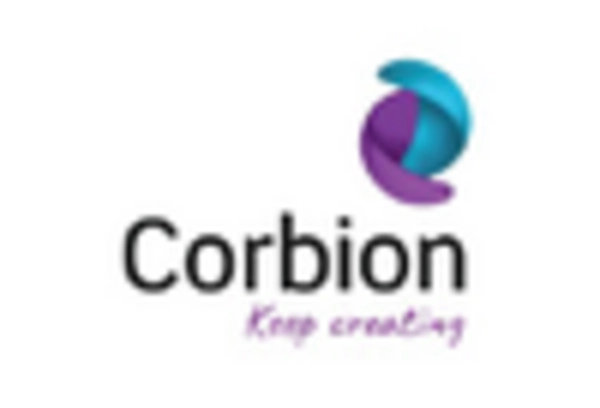Rising Demand in Food and Beverage Industry
The 3-Hydroxybutyrolactone Market is also experiencing rising demand from the food and beverage sector. This compound is utilized as a food additive and preservative, contributing to the stability and shelf life of various products. With The 3-Hydroxybutyrolactone projected to exceed 7 trillion dollars by 2025, the demand for effective preservatives is likely to grow. As consumers increasingly prefer products with natural ingredients, the appeal of 3-Hydroxybutyrolactone as a safer alternative to synthetic preservatives may enhance its market presence. This trend indicates a potential for significant growth within the food sector, further solidifying the role of 3-Hydroxybutyrolactone in diverse applications.
Advancements in Chemical Synthesis Techniques
The 3-Hydroxybutyrolactone Market is benefiting from advancements in chemical synthesis techniques. Innovations in production methods, such as biotechnological processes and more efficient catalytic systems, are enhancing the yield and purity of 3-Hydroxybutyrolactone. These advancements are crucial as they reduce production costs and environmental impact, making the compound more accessible for various applications. The market is likely to see an increase in production capacity, which could lead to a decrease in prices, thereby stimulating demand across multiple sectors. As industries seek cost-effective and sustainable solutions, the enhanced production capabilities of 3-Hydroxybutyrolactone may position it favorably in competitive markets.
Growth in Cosmetic and Personal Care Products
The 3-Hydroxybutyrolactone Market is experiencing growth driven by its incorporation into cosmetic and personal care products. This compound is recognized for its moisturizing properties and is increasingly utilized in formulations for skin care, hair care, and other beauty products. The 3-Hydroxybutyrolactone has shown resilience, with projections indicating a steady growth trajectory, potentially reaching over 800 billion dollars by 2025. As consumers become more conscious of ingredient safety and efficacy, the demand for products containing 3-Hydroxybutyrolactone is likely to rise. This trend not only enhances the market potential for 3-Hydroxybutyrolactone but also encourages innovation in product formulations, thereby expanding its applications within the cosmetic sector.
Increasing Applications in Biodegradable Polymers
The 3-Hydroxybutyrolactone Market is witnessing a surge in demand due to its applications in biodegradable polymers. As environmental concerns escalate, industries are increasingly seeking sustainable alternatives to traditional plastics. 3-Hydroxybutyrolactone, being a key component in the production of polyhydroxyalkanoates, offers a promising solution. The market for biodegradable plastics is projected to grow significantly, with estimates suggesting a compound annual growth rate of over 20 percent in the coming years. This trend indicates a robust opportunity for the 3-Hydroxybutyrolactone Market, as manufacturers pivot towards eco-friendly materials. Furthermore, the increasing regulatory pressures to reduce plastic waste are likely to bolster the demand for biodegradable options, positioning 3-Hydroxybutyrolactone as a vital ingredient in the transition towards sustainable materials.
Technological Innovations in Drug Delivery Systems
The 3-Hydroxybutyrolactone Market is poised for growth due to technological innovations in drug delivery systems. This compound is being explored for its potential in creating advanced drug delivery mechanisms, particularly in the pharmaceutical sector. The increasing focus on personalized medicine and targeted therapies is driving the need for effective delivery systems. As the pharmaceutical market continues to expand, with estimates suggesting it could reach over 1.5 trillion dollars by 2025, the demand for innovative solutions like those involving 3-Hydroxybutyrolactone is likely to increase. This trend not only highlights the versatility of 3-Hydroxybutyrolactone but also underscores its potential to revolutionize drug delivery methodologies.


















Leave a Comment